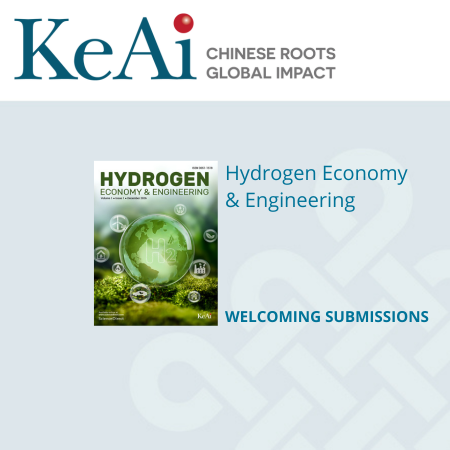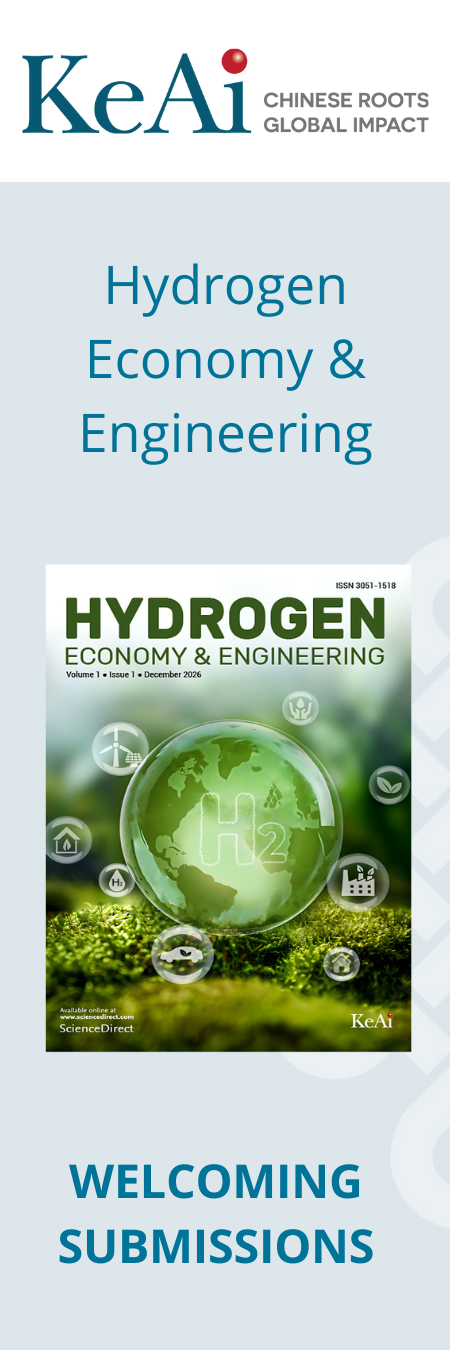High-power radiatively cooled thermoelectric generator for diurnal waste heat harvesting
Available online 5 December 2025
Governed by the second law of thermodynamics, waste heat generation is inevitable and has been a major source of energy loss and environmental concern in human society. Harvesting waste heat into useful...
A stack-scale three-dimensional model to analyze the operation process of redox flow batteries
November 2025
Long-duration energy storage has become critical for renewable energy integration. While redox flow batteries, especially vanadium-based systems, are scaling up in capacity, their performance at the...
Two-in-one redox photocatalysis: Cooperative hydrogen evolution and benzaldehyde production via 2D MoS2 cocatalyst-loaded hydrangea-like Zn3In2S6
November 2025
By harnessing the power of MoS2 as a cocatalyst to enhance electron transfer and charge carrier separation, a groundbreaking two-in-one redox photocatalytic system was developed. This innovative system...
Advances in anodes of microbial fuel cells for wastewater remediation and power generation
November 2025
Microbial fuel cells (MFCs) are promising for realizing wastewater remediation and electricity co-generation, which may significantly promote the formation of an environmentally friendly, clean energy...
High-entropy liquid electrolytes in rechargeable batteries: Merits and challenges
November 2025
The growing severity of environmental challenges has accelerated advancements in renewable energy technologies, highlighting the critical need for efficient energy storage solutions. Rechargeable batteries,...
Metal-organic framework-derived hollow NiCo2O4 spinel arrays coupled with Pd-Ni bimetallic sites for efficient CO2 hydrogenation to formate
November 2025
CO2 hydrogenation to formate is an effective strategy for promoting the sustainable carbon cycle. However, formate yields are significantly influenced by the amount of noble metal (e.g., Pd) used. Here,...
Ultrafast Joule heating technology for functional nanomaterials synthesis: Recent progress, challenges, and perspectives
November 2025
Ultrafast Joule heating (JH) has emerged as a powerful and scalable platform for rapid thermal processing of advanced nanomaterials. By delivering transient, high-intensity electrical pulses, JH induces...
Engineering of entropy-driven surface doping towards stabilized high-voltage NCM cathodes: Li (Ni, Co, Mn, Ce, La, Zr, Al) Ox
November 2025
Ni-rich LiNi0.8Mn0.1Co0.1O2 (NCM) cathodes in layered oxide cathodes are attractive for high-energy lithium-ion batteries but suffer from rapid capacity fade and thermal instability at high charge voltages....
Recent advances in the high entropy materials for advanced energy storage with machine learning
November 2025
High-entropy materials (HEMs) show exceptional mechanical properties, highly adjustable chemical characteristics, and outstanding stability, making them suitable for energy storage. However, the broad...
Conductive and zincophilic textile-stabilized Zn anode for flexible Zn-I2 battery
November 2025
Aqueous Zinc-metal batteries (AZBs) hold great promise for energy storage applications, yet their practical deployment is hindered by challenges such as dendrite formation and parasitic side reactions...
An active high-entropy air electrode for enhanced reversible solid oxide cell performance and stability
November 2025
The insufficient stability and poor surface reaction kinetics (i.e., oxygen reduction reaction (ORR) and oxygen evolution reaction (OER)) of air electrodes are significant factors hindering the development...
Lattice-oxygen modulation for redox stabilization and multi-electron transfer in lithium-rich cathodes
Available online 27 November 2025
Lithium-rich layered oxides (LRLOs) are promising cathode materials due to their high specific capacity, energy density, and operating voltage. However, their performance is hindered by the limited...
Overcoming flexible substrate limitations: Dual optimization of alkali doping and compositional grading in high efficient CIGS photovoltaics
Available online 27 November 2025
This study presents a systematic investigation of high-efficiency flexible copper indium gallium selenide (CIGS) thin-film solar cells fabricated using an optimized three-stage co-evaporation process....
Remarkably high hydration capability of BaSn1–xInxO3–δ perovskite materials: What do we need to know about protons in complex oxides?
Available online 21 October 2025
Proton-conducting oxides constitute a wide class of materials that exhibit pronounced proton transport in humid atmospheres. Owing to their high proton mobility, these oxides are regarded as promising...
Identifying the tri-roles of anion vacancy on improving K-ion storage
August 2025
Anion vacancy engineering (AVE) is an emerging strategy to improve K-ion storage of conversion-type anode materials, despite its intensive application in Li/Na-ion batteries. The existing mechanisms...
Dual-pathway self-promoting piezocatalytic H2O2 generation over Bi5Ti3FeO15 nanofibers and the mechanism
August 2025
Piezocatalytic hydrogen peroxide (H2O2) generation is a promising synthesis method that has received increasing attention; however, the reaction pathway requires further investigation. Here, Bi5Ti3FeO15...
Hierarchically mesoporous Fe-N-C single-atom catalysts for efficient oxygen electrocatalysis in rechargeable zinc-air batteries
August 2025
Rechargeable zinc-air batteries (ZABs) hold significant promise for next-generation energy storage due to their unique advantages in safety, energy and cost. However, their commercial application remains...
PA-doped high-temperature proton exchange membranes containing bis-cation pairs with excellent PA retention capability for fuel cells
August 2025
The thiol-imidazole functionalized (p-triphenyl-pentafluorobenzaldehyde) polymer (IMPTP) was prepared and quaternized with different side chains to obtain imidazolium-modified Me-IMPTP, He-IMPTP and...
A new pyridine-based porous organic polymer composited high-temperature proton exchange membrane
August 2025
As promising high-temperature proton exchange membranes, phosphoric acid (PA) doped polybenzimidazole (PBI) membranes still face challenges, including excessive PA leaching and limited long-term stability....
Optimization strategies for enhancing the stability of Cu-based catalysts
August 2025
Electrocatalytic carbon dioxide reduction (ECO2RR) serves as a promising approach for converting CO2 into energy-dense fuels and high-value chemicals, garnering substantial interest across academic...
Multi-scale modeling of the multi-phase flow in water electrolyzers for green hydrogen production
August 2025
Water electrolyzers play a crucial role in green hydrogen production. However, their efficiency and scalability are often compromised by bubble dynamics across various scales, from nanoscale to macroscale...
2D Ti3C2Tx as efficient cathode electrocatalyst for hybrid electrolyte Li-air battery
August 2025
Hybrid electrolyte lithium-air batteries (HELABs) face challenges such as the high cathode overpotential, cycling instability, and catalyst degradation, limiting their widespread use in practical applications....
Optimization of single crystal surface and interface structures for electrocatalysis
August 2025
For emerging renewable and sustainable energy technologies, single crystal materials have become key materials to enhance electrocatalytic performance because of their atomic-level ordered structures...
Asymmetric ruthenium-iron dipole enabling fast alkaline water splitting on ruthenium-doped iron-nickel layered double hydroxides
August 2025
Electrically driven water splitting is an efficient method for green hydrogen production; however, its practical application is substantially constrained by the kinetically sluggish anodic oxygen evolution...
Robust synergistic effects of doping and defect engineering in photocatalytic H2O2 production
May 2025
Hydrogen peroxide (H2O2) photosynthesis represents an advanced on-site production method with significant potential for on-demand supply. However, various challenges hinder the efficiency of H2O2 yield,...


